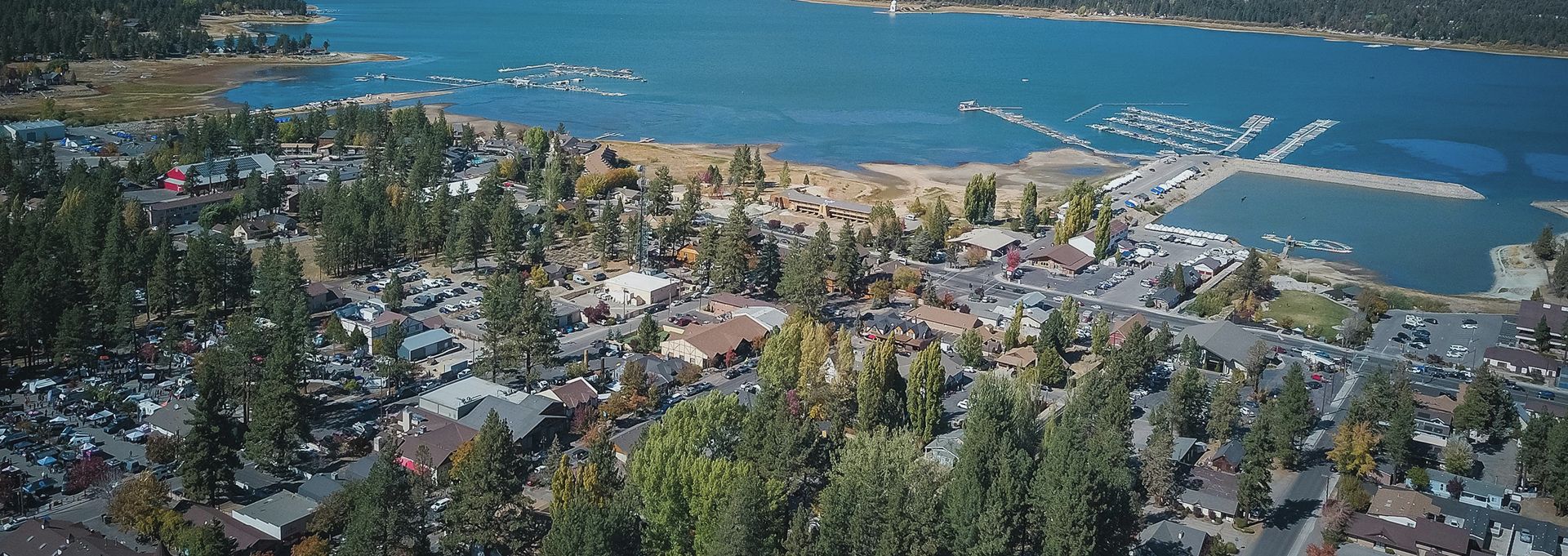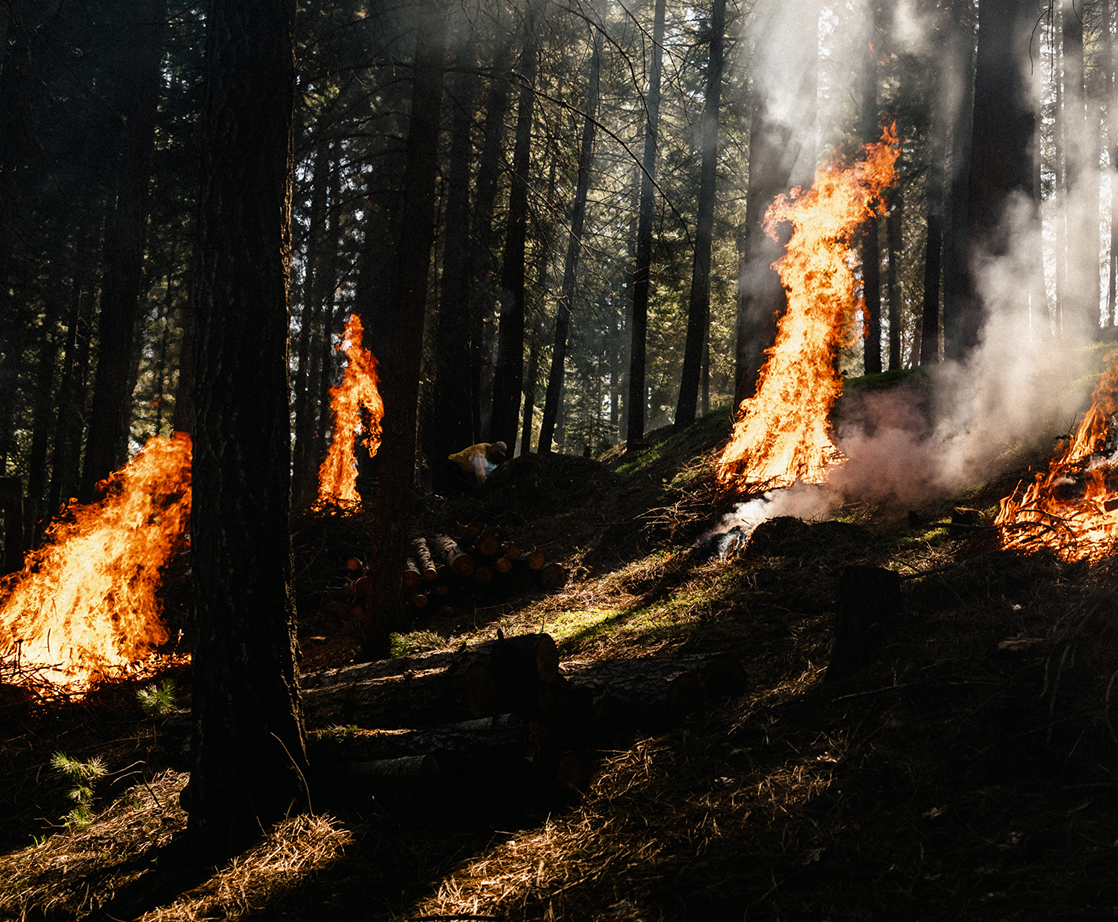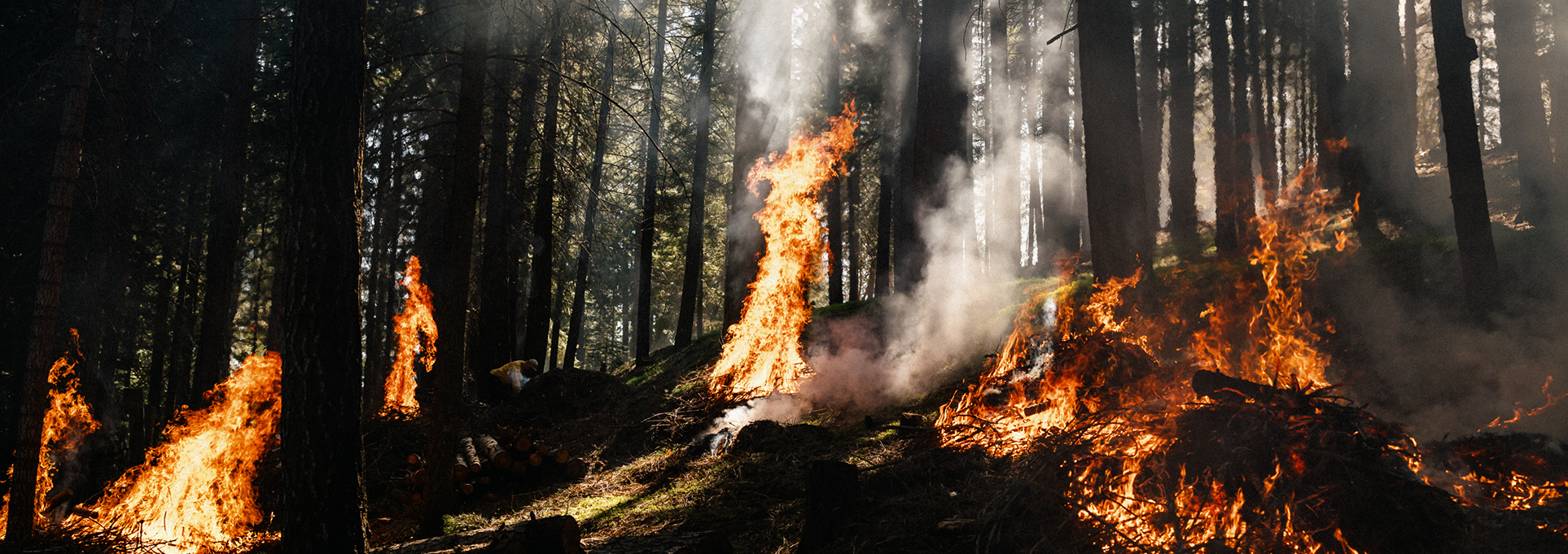As wildfire risk to communities increases, more managers are building strategies to manage this risk. In the US, planners commonly defer to the industry standard wildfire risk assessment data from Pyrologix, a Vibrant Planet company. Their models have projected wildfire risk data across the US as a whole, regionally in the Southeast and Northeast, and for nearly every state. Similar assessments have also been made for Canada, and their base fuel models drive fire modeling and risk assessment globally.
Here is an overview of the national-standard data Pyrologix has authored that you may consider leveraging for your own wildfire risk plan:
- Burn Probability: Estimates the likelihood of a fire occurring in a specific area within a given time frame by integrating historical fire occurrences, weather patterns, and fuel conditions.
- Risk to Potential Structures: Evaluates the potential risk of fire to existing structures by considering factors like historical fire data, vegetation, and topography.
- Community Wildfire Risk Reduction Zones: Identifies high-risk areas within a community to prioritize them for preventive measures and resource allocation.
- Exposure Type: Classifies different types of fire exposure, such as direct flame contact, radiant heat, and ember exposure, to tailor mitigation strategies and inform where to prioritize structural inspections to reduce ignitability
- Flame Length: Predicts flame length based on fuel type, weather conditions, and topography to aid in firefighting strategy and resource planning.
- Wildfire Hazard Potential: Assesses the overall hazard potential of an area by considering factors like fuel load, topography, and historical fire data.
- Conditional Risk to Potential Structures: Combines risk assessment with conditional probabilities to evaluate how specific conditions affect the risk to structures, providing a dynamic risk assessment.
Each of these locally calibrated datasets, as well as articles and insights about risk reduction can be accessed directly on the Wildfire Risk to Communities website. Additionally, Pyrologix has continued to refine additional detailed data layers that community wildfire managers can use to comprehensively assess and mitigate risk:
- Damage Potential: The next iteration of the Conditional Risk to Potential Structures dataset that also includes ember load
- Structure exposure score: The next version of the Risk to Potential Structures dataset that includes ember load and classifies every structure across the nation into one of ten classes
- Ember production and load: A model of the number of embers produced and their downwind transport
- Sources of ember load to buildings: Determines the source of embers that land on buildings to help reduce the number of potential embers
- Functional WUI: A delineation and classification of the wild and urban interface into operational zones that indicate what actions are best to take – including home hardening, fuel management, and indoor air quality management
While all of this data is insightful and powerful, we know it can be difficult to know what to do next. Additionally, when everything is high risk, it can be impossible to know how to prioritize mitigation efforts. Pyrologix's models are incredibly powerful, and deriving actionable insights can sometimes require additional personnel or deep internal expertise.
On our platform, wildfire managers can build a risk reduction plan that automatically utilizes models from Pyrologix, in a fraction of the time and cost. Together, Vibrant Planet and Pyrologix take complex datasets a step further by incorporating a community’s collaborative priorities, and building a prioritized risk reduction plan, to identify the most important hazardous fuel treatments, defensible space work, and addressing structural ignitability, like never before. See how Truckee Fire built their own plan in just 9 weeks after upfront customization.
If you’re ready to build a powerful community plan leveraging the industry leading power of Pyrologix, supported by Vibrant Planet’s intuitive platform, reach out to us today.












